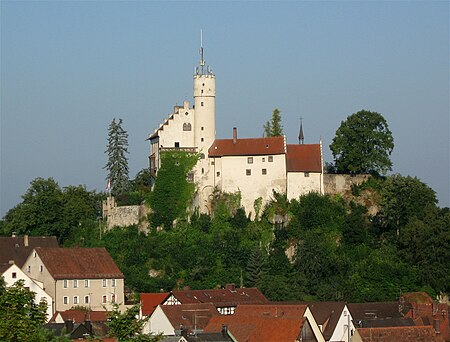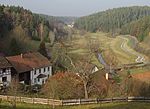Gößweinstein Castle
Forchheim (district)GößweinsteinHill castlesRegistered historic buildings and monuments in Bavaria

Gößweinstein Castle (German: Burg Gößweinstein), also called Schloss Gößweinstein, is a mediaeval hilltop castle in Gößweinstein in the county of Forchheim in the German state of Bavaria. It towers high above the market town and the River Wiesent and may have been the inspiration for Richard Wagner's grail castle in his opera, Parsifal. The castle is a Bavarian listed building, no. D-4-74-129-10.
Excerpt from the Wikipedia article Gößweinstein Castle (License: CC BY-SA 3.0, Authors, Images).Gößweinstein Castle
Burgstraße,
Geographical coordinates (GPS) Address Website External links Nearby Places Show on map
Geographical coordinates (GPS)
| Latitude | Longitude |
|---|---|
| N 49.770394444444 ° | E 11.334430555556 ° |
Address
Burg Gößweinstein
Burgstraße
91327
Bavaria, Germany
Open on Google Maps








